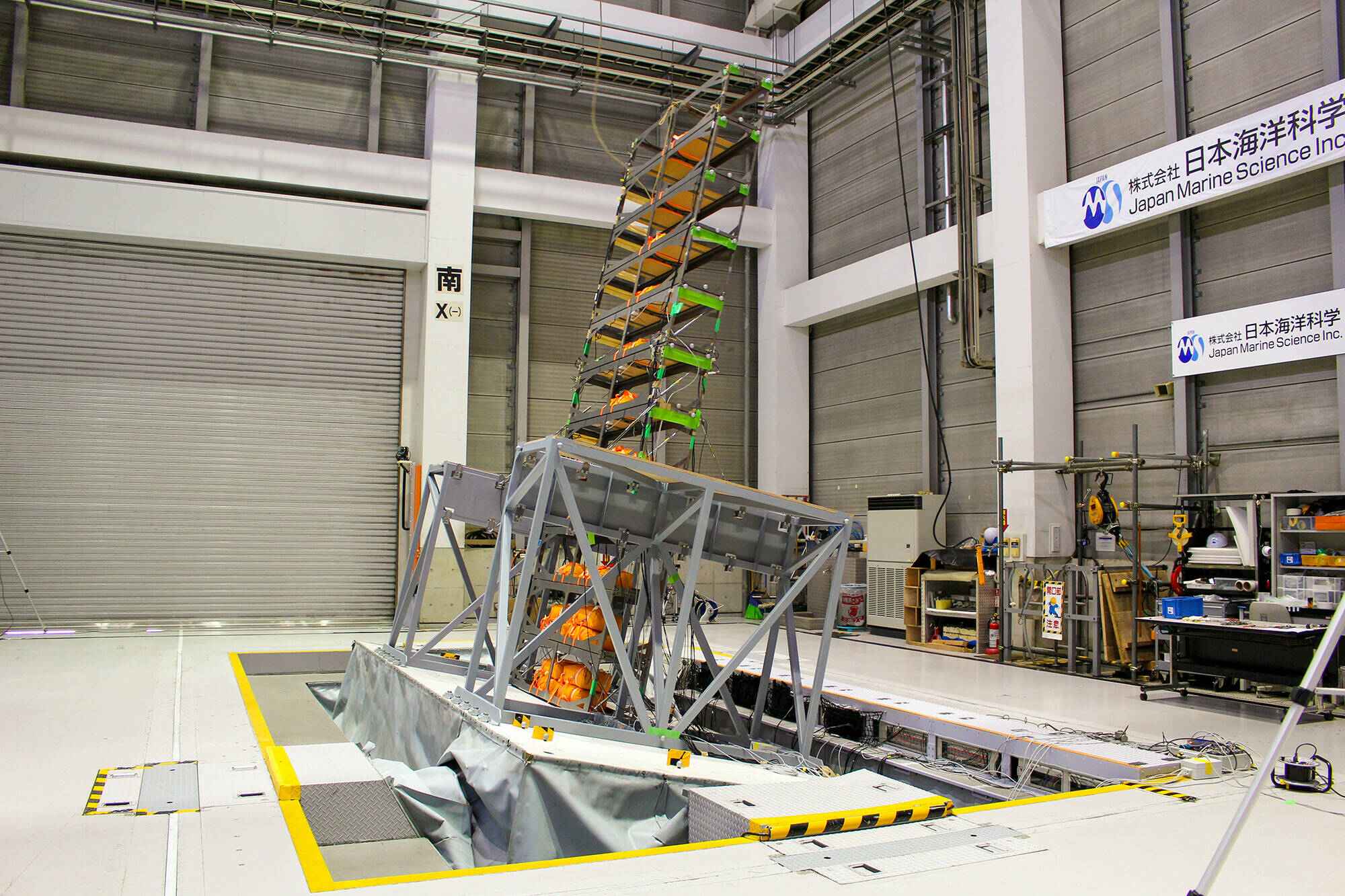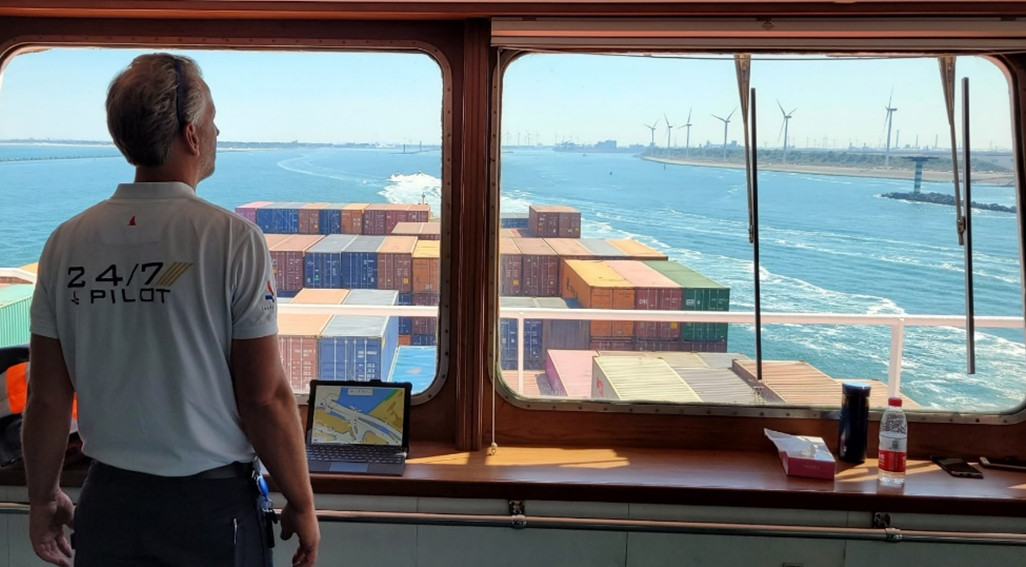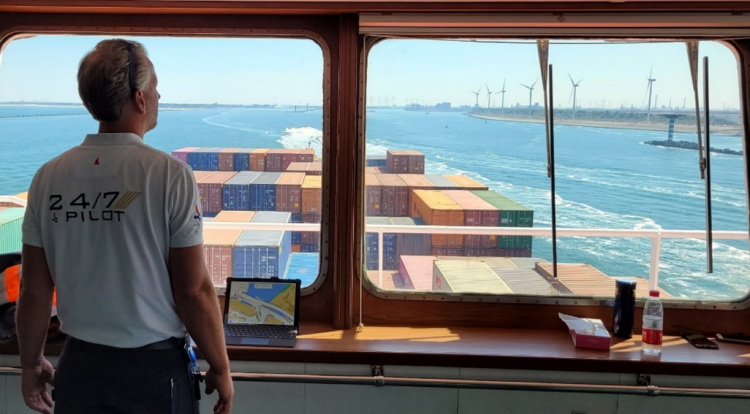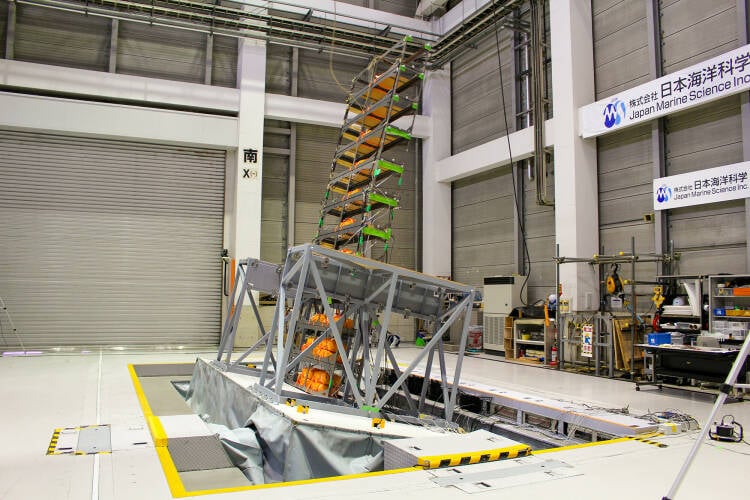June 2023, no. 136
News
BlueWeek
AI Sail
TopTier
CFD
Zero Emission
Foil Design
Traffic studies
F-series
Manxman ferry
Cover
TopTier JIP - Work in progress
Bas Buchner and Jos Koning updated the intermediate project status to the IMO Maritime Safety Council at MSC106 in London
Credits: WSC

Create a MARIN account to stay updated
Report
at sea
The World Shipping Council estimates (see reference below) that there was on average a total of 1,566 containers lost at sea each year over the total fifteen-year period (2008-2022) surveyed.

In 2022, that annual number was 661 containers representing just 0.00048% of the total transported volume. However, the TopTier JIP is aiming to bring that number down even further.
For ‘zero loss of containers’ to be obtainable in the future, one should ideally identify the reasons why these containers will be lost ahead of time and take preventive actions to keep them aboard. The challenge to find them among the 250 million other containers that are transported safely every year is immense. It can be compared to finding 661 needles in a gigantic haystack!
But the TopTier Joint Industry Project is set out to do exactly that. Starting in the summer of 2021, the project will run for three years. The JIP consortium has 40 participants and brings together a vast amount of knowledge and experience from shipping lines, classification societies, national authorities, lashing makers, insurance companies, system suppliers, stakeholder associations and research institutes.

40 participants in JIP
So, what is the best way of searching for these ‘container-sized needles’? Knowing precisely what to look for is the key to any search. In this case we should start by looking at gaps in the procedures, rules and limits that are crucial to ensure safe container transport. Container loss incidents obviously slipped through at least one of these gaps. The project started off with a gap analysis, combining an overview of current practice in the container transport chain, a broad crew survey and a review of incidents.
Containerships are planned and loaded to maximise cargo intake with the constraint that maximum loads in transit will not exceed maximum allowable safe working loads. The challenge is that it is easy to exceed safe limits, and that operations rely on decisions taken both ashore and at sea. Safety margins are under pressure due to the competitive environment and they rely on day-to-day operating practice. At the same time, operational procedures and rules vary across different shipping lines and class societies.

In addition, safety margins are challenged by human decisions, uncertain information about stowage, weather conditions, ship motions and cargo dynamics. These hidden gaps in the safety framework open up possibilities that cargo is loaded beyond the maximum safe stowage for the ship or that vessel behaviour at sea exceeds the design values used in the stow planning or the actual strength of the stowage arrangement is less than the design limits used in the planning calculations.
The review shows that the majority of containers lost is due to a small number of incidents with extreme ‘off design’ motions. Handling these will improve safety significantly. The other reasons for most of the losses are because of many smaller incidents with varying root causes. If the aim is for zero loss of containers, then all root causes must be considered, and improvements to best practice must be recommended to regulating bodies.

Presentation to the IMO Maritime Safety Council
MARIN’s President Bas Buchner and Jos Koning, Senior Project Manager Performance at Sea,
head up the TopTier JIP and recently updated the intermediate project status to the IMO Maritime Safety Council at MSC106 in London (pictured). The presentation included the results of the gap analysis, an outline of the investigations into extreme motions, parametric roll in following seas, the Notice to Mariners submission (see reference below) and decision support for crews, dynamics of high tier cargo stacks, uncertainties in the ship to shore interface, and the investigations into the impact of wear and tear on the strength of both containers and lashing equipment. Please watch our one-minute video ‘Work in progress’.
The investigations are still ongoing and will proceed into the coming year. Results will be used to work out recommendations for transparent and auditable procedures, feedback of measured information, approved computer tools and defining minimum required information flows. The JIP aims to close gaps where possible and ensure visibility and awareness to avoid the ones that remain. Ultimately, we want to make sure that all 250 million containers reach their destination safely.
More info:













More info:
TopTier JIP - Work in progress
Presentation to the IMO Maritime Safety Council
MARIN’s President Bas Buchner and Jos Koning, Senior Project Manager Performance at Sea,
head up the TopTier JIP and recently updated the intermediate project status to the IMO Maritime Safety Council at MSC106 in London (pictured). The presentation included the results of the gap analysis, an outline of the investigations into extreme motions, parametric roll in following seas, the Notice to Mariners submission (see reference below) and decision support for crews, dynamics of high tier cargo stacks, uncertainties in the ship to shore interface, and the investigations into the impact of wear and tear on the strength of both containers and lashing equipment. Please watch our one-minute video ‘Work in progress’.
The investigations are still ongoing and will proceed into the coming year. Results will be used to work out recommendations for transparent and auditable procedures, feedback of measured information, approved computer tools and defining minimum required information flows. The JIP aims to close gaps where possible and ensure visibility and awareness to avoid the ones that remain. Ultimately, we want to make sure that all 250 million containers reach their destination safely.

In addition, safety margins are challenged by human decisions, uncertain information about stowage, weather conditions, ship motions and cargo dynamics. These hidden gaps in the safety framework open up possibilities that cargo is loaded beyond the maximum safe stowage for the ship or that vessel behaviour at sea exceeds the design values used in the stow planning or the actual strength of the stowage arrangement is less than the design limits used in the planning calculations.
The review shows that the majority of containers lost is due to a small number of incidents with extreme ‘off design’ motions. Handling these will improve safety significantly. The other reasons for most of the losses are because of many smaller incidents with varying root causes. If the aim is for zero loss of containers, then all root causes must be considered, and improvements to best practice must be recommended to regulating bodies.
Bas Buchner and Jos Koning updated the intermediate project status to the IMO Maritime Safety Council at MSC106 in London
40 participants in JIP
So, what is the best way of searching for these ‘container-sized needles’? Knowing precisely what to look for is the key to any search. In this case we should start by looking at gaps in the procedures, rules and limits that are crucial to ensure safe container transport. Container loss incidents obviously slipped through at least one of these gaps. The project started off with a gap analysis, combining an overview of current practice in the container transport chain, a broad crew survey and a review of incidents.
Containerships are planned and loaded to maximise cargo intake with the constraint that maximum loads in transit will not exceed maximum allowable safe working loads. The challenge is that it is easy to exceed safe limits, and that operations rely on decisions taken both ashore and at sea. Safety margins are under pressure due to the competitive environment and they rely on day-to-day operating practice. At the same time, operational procedures and rules vary across different shipping lines and class societies.

Credits: WSC
In 2022, that annual number was 661 containers representing just 0.00048% of the total transported volume. However, the TopTier JIP is aiming to bring that number down even further.
For ‘zero loss of containers’ to be obtainable in the future, one should ideally identify the reasons why these containers will be lost ahead of time and take preventive actions to keep them aboard. The challenge to find them among the 250 million other containers that are transported safely every year is immense. It can be compared to finding 661 needles in a gigantic haystack!
But the TopTier Joint Industry Project is set out to do exactly that. Starting in the summer of 2021, the project will run for three years. The JIP consortium has 40 participants and brings together a vast amount of knowledge and experience from shipping lines, classification societies, national authorities, lashing makers, insurance companies, system suppliers, stakeholder associations and research institutes.

The World Shipping Council estimates (see reference below) that there was on average a total of 1,566 containers lost at sea each year over the total fifteen-year period (2008-2022) surveyed.
Report
June 2023, no. 136

July 2023, no. 136












